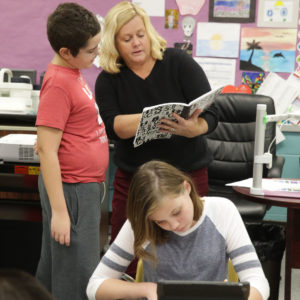As policymakers, principals, and parents wrestle with the reopening of schools, many are struggling with what feel like competing priorities. How do we address the gaps in academic learning that so many children experienced during this pandemic year? How do we ensure children’s social and emotional health after a truly unprecedented time in their development? And how do we support their very real and urgent need to process the experience they have just been through?
It may seem like these questions are in tension with each other, but only if we take a narrow view of education. In fact, numerous studies have shown the importance of addressing all aspects of children’s development — cognitive, social, emotional, and physical — in order for them to be successful in school and in life. And research conducted by Trust for Learning shows that parents of all backgrounds want their children to be well-rounded and capable. Parents place a strong emphasis on their children developing knowledge, accountability, real-world readiness, and a sense of self.
Sadly, the COVID-19 pandemic has widened opportunity gaps and exacerbated challenges already facing low-income families and children of color. In this post-pandemic moment of reckoning for American public education, it will be more important than ever to focus on developing the whole child — not just improving children’s math and reading scores.
Providing a comprehensive learning approach will be an important step, especially for our youngest learners. Yet some models and programs do a far better job of fostering all aspects of children’s growth than others.
As local and state educators support re-openings, they should take action so that these approaches can flourish. Repairing the damage of the pandemic begins by supporting our youngest learners.
Policymakers can support program models that provide for additional individualized instruction. The pandemic has exacerbated inequity, including the disparate opportunities and outcomes that children from low-income families, those of color, English learners, and children with disabilities have experienced. As a result, there is an even greater need for teachers to personalize instruction and scaffold learning based on children’s individual learning trajectories.
For example, at Christina Seix Academy in Trenton, New Jersey, which uses the Tools of the Mind approach, teaching is based on children’s current learning capacity rather than general age-level expectations. Teachers provide personalized guidance and individualized scaffolding or support based on an assessment of each child’s Zone of Proximal Development (e.g., what a child can do independently and with varying levels of assistance) so that each child is challenged at his or her own level of ability.
Next, education leaders should anticipate the need for additional behavioral supports and trauma-informed interventions to address the adverse effects of the pandemic on children and families. This may mean allocating additional funding or personnel to support mental health, community, and other needed services. At Friends Center for Children in New Haven, there is a comprehensive Emotional Wellbeing Program, which includes a licensed clinical social worker who supports all students, parents, and teachers as needed. The Center also assesses students within the first six months of enrollment and creates individualized plans to provide each child with the learning experience they need to thrive.
Finally, as children return to a classroom environment, it is critical that teachers and parents are actively engaged in sharing information and partnering to support the unique needs of each child. Local leaders should emphasize parent outreach to better understand the environment and conditions that children have experienced over the past year. This could manifest itself in various ways, through home visits, surveys, or dedicated teacher/parent meetings.
Family partnership is a key part of Bank Street programs in New York City. Through an app that allows teachers to correspond with parents during the day, parent-teacher conferences, and frequent conversations with caregivers, everyone is on the same page about children’s overall development and academic learning. These interactions also help to build community in the form of the teacher–caregiver-child relationships that are the cornerstone of Ideal Learning programs.
The past year and a half have certainly brought a lot of challenges for students, parents, and teachers all around. As we look to the next school year, I hope that we can take the steps needed to support every child in all aspects of their development.
We can review language and numeracy skills while reinvigorating students’ confidence and curiosity. We can and should provide emotional support for those who have experienced hardship and loss, while also addressing the gap in reading instruction. We don’t have to choose between these important goals — in fact, they can be mutually reinforcing. Ideal learning programs throughout the country demonstrate this and can serve as exemplars for how we move forward to meet the needs of children and the concerns of parents.

